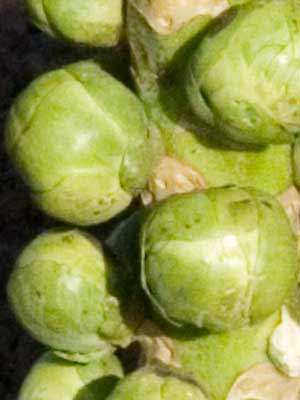Crop Rotation Group
Brassicas (Cabbage family)
|

|
Soil
Rich, deep soil, firm with plenty of well rotted compost dug in.
|
Position
Full sun.
|
Frost tolerant
Yes, improves with frost.
|
Feeding
Mix composted manure or another high-nitrogen compost into the soil before planting. Add a slow release organic fertiliser to the planting hole before transplanting. Spraying leaves with dilute seaweed spray prevents birds eating them.
|
Companions
-
|
Spacing
Single Plants: 60cm (1' 11") each way (minimum)
Rows: 60cm (1' 11") with 60cm (1' 11") row gap (minimum)
|
Sow and Plant
Sow early to mid summer. Sow in seedtrays or pots as they take quite a while to reach transplanting stage and during that time a quick summer crop can be grown and harvested in the garden. Firm soil well when transplanting. Plant out when about 10 cm high
Our Garden Planning Tool can produce a personalised calendar of when to sow, plant and harvest for your area.
|
Notes
Surround stem with a 10cm mat with a slit cut into it for the stem to prevent cabbage root fly from destroying the roots. Use fine mesh or fleece over the summer to prevent butterflies laying eggs on the underside of leaves - caterpillars can destroy these plants. Protect against birds which can damage the young seedlings and overwintering crops. May need supportive canes during the winter.
|
Harvesting
Harvest from the bottom of the plant upward, twisting off sprouts that are larger than a marble. Removing nearby leaves helps to make room for growing sprouts.
|
Troubleshooting
Brussels sprouts are a mecca for aphids. Plant tansy next to it to encourage ladybirds or spray with a garlic and soap spray
|